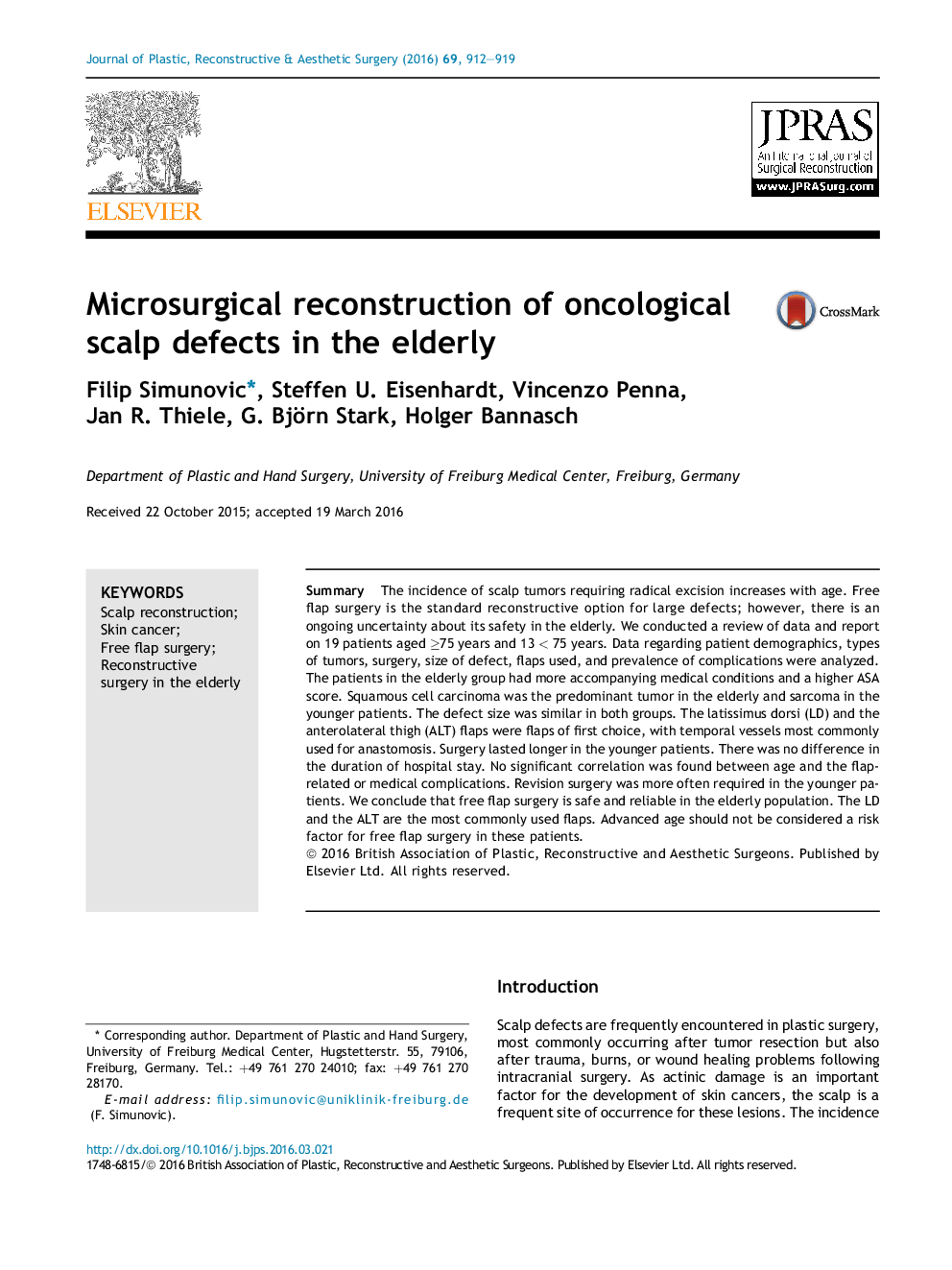| Article ID | Journal | Published Year | Pages | File Type |
|---|---|---|---|---|
| 4117149 | Journal of Plastic, Reconstructive & Aesthetic Surgery | 2016 | 8 Pages |
SummaryThe incidence of scalp tumors requiring radical excision increases with age. Free flap surgery is the standard reconstructive option for large defects; however, there is an ongoing uncertainty about its safety in the elderly. We conducted a review of data and report on 19 patients aged ≥75 years and 13 < 75 years. Data regarding patient demographics, types of tumors, surgery, size of defect, flaps used, and prevalence of complications were analyzed. The patients in the elderly group had more accompanying medical conditions and a higher ASA score. Squamous cell carcinoma was the predominant tumor in the elderly and sarcoma in the younger patients. The defect size was similar in both groups. The latissimus dorsi (LD) and the anterolateral thigh (ALT) flaps were flaps of first choice, with temporal vessels most commonly used for anastomosis. Surgery lasted longer in the younger patients. There was no difference in the duration of hospital stay. No significant correlation was found between age and the flap-related or medical complications. Revision surgery was more often required in the younger patients. We conclude that free flap surgery is safe and reliable in the elderly population. The LD and the ALT are the most commonly used flaps. Advanced age should not be considered a risk factor for free flap surgery in these patients.
